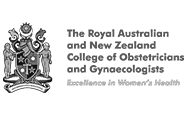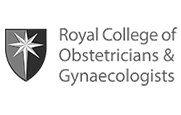Incontinence
What is urinary incontinence?
Urinary incontinence is the accidental or involuntary loss of urine. Urinary incontinence is a common condition affecting 1 in 3 women and more than 4 million women in Australia. It can be embarrassing and distressing and the decision to have treatment depends on how much it is impacting your life. Treatment for urinary incontinence depends on the type of urinary incontinence and the severity of symptoms. There are two main types of urinary incontinence but it is possible to have combination of the two.
- Stress urinary incontinence
- Loss of urine during activities that increase abdominal pressure which pushes on the bladder such as coughing, sneezing, laughing, rapid walking, jumping, running and heavy lifting.
- Occurs due to weakness of bladder neck and urethral support mainly from trauma of pregnancy and vaginal childbirth
- Affects 10-20% of women
- When symptoms are severe and non-surgical treatments are unsatisfactory, surgery can be considered
- Urge urinary incontinence.
- Urinary loss with sudden strong urge to urinate but with inability to hold on long enough to get to the bathroom in time. This is more common with age and is often referred to as overactive or unstable bladder, or detrusor instability
- Some of the triggers include hearing of running water, hand washing, “key in the door” and when under stress.
- Not from weakness of bladder neck and urethral support but oversensitivity and overactivity of bladder muscle that contracts prematurely, not allowing for enough time to get to the bathroom leading to urinary leakage
- Overactive bladder is often associated with urinary frequency (going to the toilet more than 7 times during the day) and nocturia (waking up to void during the night, more than once per night)
- Treatment for urinary urgency and urge incontinence is medical treatment and not surgical
- Mixed urinary incontinence.
- Combination of above two types.
- The urge urinary incontinence is targeted first with nonsurgical measures, followed by surgical options if symptoms are not satisfactorily controlled.
Some women with urinary incontinence may also have pelvic organ prolapse, which is commonly simply referred to as prolapse.
What investigations should one have for urinary incontinence?
Investigation should always start with a comprehensive medical history with details of pelvic organ function followed by a thorough gynaecological examination assessing pelvic floor muscle function, presence of pelvic organ prolapse and reproducibility of stress urinary incontinence by coughing.
A urine sample should be taken to test for possible urinary tract infection, as it is a common condition that can be easily treated with antibiotics.
A bladder diary or “frequency volume chart” may be completed which records the frequency and volumes of voids, oral fluid intake and urinary leakage. This is helpful for doctors to determine the bladder function and pattern of urinary leakage for accurate diagnosis and treatment strategies. It is recommended to record over 3 days to get a more representative average.
Ultrasound of the renal tract checks bladder, ureters and kidneys and can rule out bladder pathology that may affect bladder function. It also assesses bladder emptying by measuring the amount of urine remaining after voiding.
Treatment for urge urinary incontinence (Overactive bladder)
Overactive bladder is a very common problem that causes urinary urgency, frequency and at times urinary leakage before reaching the bathroom. Treatment for overactive bladder is primarily nonsurgical and includes:
Lifestyle changes:
- Avoid caffeinated drinks such as tea and coffee, fizzy drinks and alcohol as they can irritate bladder
- Avoid drinking fluid 2 hours before sleeping
- Maintain good fluid intake of around 1.5 L as concentrated urine can also irritate the bladder
Continence aids:
- Incontinence pads and pants
Many women with overactive bladders with urge incontinence get into the habit of voiding “just in case” to keep the bladder empty, thus minimizing the chance of urinary leakage. However, frequent voiding when the bladder is only partially full can lead to decreased bladder capacity with reduced ability to hold larger volumes. This can worsen the urinary frequency and urgency. Bladder training aims to increase bladder capacity by suppressing the sudden strong urge to void when the bladder is only partially full. Increasing bladder capacity will increase the interval between the voids, and decrease urinary frequency. A frequency volume chart is helpful to clearly identify how often you go to the bathroom and what your current bladder capacity is. The aim is for a 2-3 hourly interval between voids during the day and a void volume of around 200-300ml. Improvement can be noticed within 2 weeks but it may take 2-3 months of training to undo the detrimental habits that have developed over months and years. Techniques used to overcome the urge to void include:
- Distracting your mind – counting backward from 100
- Crossing your legs, sitting down, curling the toes
- Tightening your pelvic floor muscles as hard as you can and holding for as long as possible. Contracting the pelvic floor muscles helps to squeeze the urethra shut and prevents leakage. Some may find that it works better by doing a series of quick squeezes and releases rather than a continuous hold.
Bladder training will help 30-50% of women with urge incontinence. Once you’ve successfully trained your bladder into good habits, you need to continue to practice these habits to maintain them. Occasionally bladder training will not be enough and after trialing it for 6 weeks, one can consider supplementing it with medical treatment.
Vaginal Oestrogen therapy: Vaginal oestrogen comes in a cream or pessary form that is applied 2-3x per week.
Bladder relaxants: These are medications that relax the bladder wall muscles, therefore suppressing the unproductive premature bladder muscle contractions that create the sensation of urge to void. By relaxing the bladder wall muscles, the bladder will be able to fill up with more urine before needing to void, allowing for a longer interval between voids. Some of the commonly used medications include Ditropan, Oxytrol Patch, Vesicare, Enablex and Betmiga. It may take up to 4 weeks to notice improvement with these medications and up to 12 weeks to reach the medication’s maximum benefit. You may experience side effects such as dry mouth and constipation and may have to try different tablets to find the most suitable one for you. You may be able to discontinue treatment after a period of time but may find it more helpful to remain on it.
Treatment options for severe unresponsive urge incontinence / overactive bladder
- Percutaneous tibial nerve stimulation
- Botox injection to the bladder
- Sacral Neuromodulation
Treatment for stress urinary incontinence
Treatment option depends on a number of factors including symptom severity, lifestyle, age, level of health and other conditions such as presence of concurrent prolapse.
Non-Surgical treatments:
- Continence aids: Incontinence pads and pants
- Life-style changes: Controlling weight, managing constipation, treating chronic coughing, avoiding heavy lifting and starting lower impact exercises
- Pelvic floor exercises: Regular pelvic floor exercises trains and strengthens the muscles that support the pelvic organs. Pelvic floor exercises can help in up to 50 to 60% of women with mild stress urinary incontinence. Contracting or “squeezing” these muscles prior to coughing and sneezing can minimise stress urinary leakage. It requires regular and consistent exercise for 3 to 6 months to notice effects and it needs to be continued.
- Continence pessary: Removable vaginal device that supports the bladder neck and urethra. It can be used continuously or only at the time of high risk of stress incontinence such as during exercise.
Surgical treatments
- Mid-urethral sling (TVT / TOT): A narrow strip of synthetic mesh is placed under the mid section of urethra to restore urethral support and continence. This is the most common surgical procedure for treatment of stress urinary incontinence
- Colposuspension: Resuspension of loosened bladder neck and mid urethra with a number of permanent sutures attached to pelvic bone ligaments (no mesh involved)
- Urethral bulking agents: A synthetic substance is injected under the urethral lining close to the bladder neck. It “bulks” up the tissue around the junction between the bladder neck and urethra, narrowing the urethral opening to minimise urinary leakage. This treatment needs to be repeated as the effect wears off after a period of time.
- Women with stress incontinence requiring surgical treatment who also have significant prolapse may benefit from combination of the continence procedure with a prolapse surgery. Continence procedure and prolapse surgery may improve urgency but it is not the primary goal.
Bladder function needs to be assessed accurately before planning for surgery, which can be difficult to determine from history alone. Important parameters include bladder capacity and voiding dysfunctions, reflected by presence of significant residual urine that is left behind after voiding. Pressure measurements of the bladder and urethra gives important information that can be critical in formulating appropriate surgery. Bladder function is best assessed by a special examination called a urodynamic study. This examination involves placing a urinary catheter, a very small tube, in the bladder to fill the bladder with sterile fluid. Often another catheter is required in the vagina or rectum. Pressures are recorded from these catheters that reflect bladder function. Fluid volumes are measured to assess bladder filling and emptying. An examination of the inside of the bladder with a thin telescope called cystoscopy may also be carried out as part of a urodynamic study.
What are the risks of surgical treatment for stress urinary incontinence?
In addition to general risks associated with any surgical procedure such as reaction to anaesthesia, infection, bleeding and formation of a blood clot in the leg that may travel to the lungs, specific risks pertaining to surgical treatment for stress incontinence can include:
- Injury to bladder
- Voiding problem
- Altered bladder sensation
- Urinary frequency and urgency
- Mesh related problem
- Unsuccessful surgery















